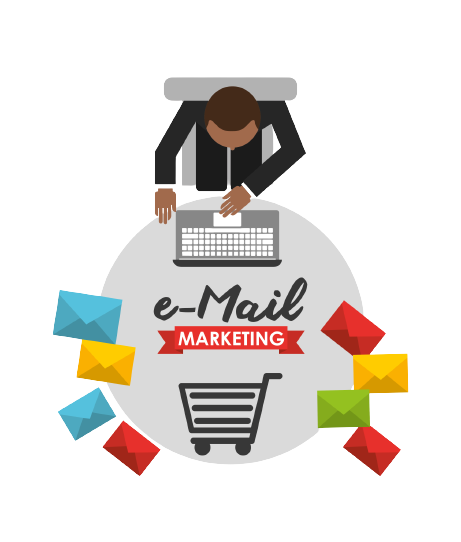
If you’ve ever felt stuck with your current email tool or wondered if there’s something better out there, then you’re in the right place.
Imagine that you’re getting ready to tell people about your cool new product or an upcoming event. You’re using Constant Contact to create your email. But deep down, you’re thinking, “Could there be a better Constant Contact Alternative? Something that does more stuff, like fancy automation and cooler ways to connect with people?”
You’re not alone. Lots of businesses like yours have used Constant Contact to send emails. It’s been helpful, sure. But as time goes on, email marketing is changing. What was good a while ago might not be enough now that things are getting fancier and more competitive.
Constant Contact did its job, no doubt about it. But as you dream bigger and try smarter things, you might want more. More ways to make your emails unique, more automatic stuff to save time, and more ways to put things together just like you want.
What’s Coming Up?
In this easy-to-follow blog, we’re going to show you some other email tools that are even better than Constant Contact. We’ll dig into what each tool can do, why it’s cool, and help you figure out which one is right for you. But this isn’t just about swapping tools – it’s about finding constant contact alternative that makes your marketing way better.
We’ll cover everything – from the important things to think about when picking a tool, to tool features, and even advice from experts who know a lot about email marketing.
So, whether you’re new to this email stuff or you’ve been doing it for a while, this blog will help you find the best email tool for you.
Understanding the Limitations of Constant Contact

When it comes to email marketing, Constant Contact has been a familiar name for quite some time. However, like any platform, it’s not without its strengths and weaknesses. In this section, we’ll delve into the pros and cons of Constant Contact as an email marketing platform, explore the common challenges that users and businesses encounter, and understand why seeking a constant contact alternative can be a strategic move for your marketing endeavors.
Pros of Constant Contact:
- User-Friendly Interface: Constant Contact is known for its user-friendly interface, making it accessible even for those new to email marketing. Its drag-and-drop editor simplifies the process of creating visually appealing campaigns.
- Template Variety: The platform offers a range of pre-designed email templates that can save time and effort, especially for businesses without in-house design resources.
- List Management: Constant Contact provides tools for managing and segmenting email lists, allowing you to send targeted messages to specific groups of subscribers.
- Reporting and Analytics: The platform offers basic reporting features that give insights into open rates, click-through rates, and engagement metrics, helping businesses measure campaign effectiveness.
Challenges Faced by Users and Businesses

- Limited Scalability: As businesses grow and require more advanced marketing strategies, they might find Constant Contact’s features limiting and outgrown for their needs.
- Competitive Landscape: The email marketing industry has evolved significantly, and newer platforms offer more advanced features, better automation, and enhanced analytics, putting Constant Contact at a disadvantage in a competitive landscape.
- Innovative Expectations: Modern consumers expect personalized and timely interactions. Constant Contact’s limitations in automation and customization might hinder businesses from meeting these expectations effectively.
- Limited Automation: Compared to more advanced platforms, Constant Contact’s automation capabilities are relatively limited. Complex automation workflows may not be achievable with its current feature set.
- Design Flexibility: While the templates are convenient, the level of design customization might be restrictive for businesses looking to create unique and branded email campaigns.
- Integration Challenges: Constant Contact’s integration options with third-party applications are not as extensive as some other platforms, potentially hindering seamless data flow between different tools.
Why Seeking Alternatives is a Strategic Move?
Seeking constant contact alternatives and searching for competitors to Constant Contact represent a strategic move for several compelling reasons. Today, businesses require email marketing platforms that offer advanced automation, customization, and integration capabilities to keep pace with evolving industry trends and heightened customer expectations. As companies grow, scalability becomes paramount, and a constant contact alternative can provide more robust features to accommodate expanding marketing strategies. By transitioning to a platform that offers improved engagement rates, enhanced data management, and better integration options, businesses can optimize their email campaigns for higher conversion rates and a superior return on investment, ultimately positioning themselves for more effective and competitive marketing endeavors.
Seeking a constant contact alternative that addresses the above-mentioned limitations can empower your business to execute more sophisticated and effective email campaigns, ultimately driving better results and engagement from your audience.
Criteria for Selecting an Ideal Email Marketing Platform

A successful marketing strategy is incomplete without a robust email marketing platform. As businesses recognize the power of personalized communication, the demand for effective email marketing tools has surged. While Constant Contact has been a popular choice, considering a constant contact alternative that better aligns with your business needs can elevate your marketing efforts. But how do you choose the perfect email marketing platform for your specific goals and audience? Let’s explore the essential criteria you should consider when selecting an ideal email marketing platform.
1. Essential Features
The right email marketing platform and constant contact alternative should provide a comprehensive suite of features to cover all aspects of your campaigns. Look for:
- Email Campaign Management: Easy-to-use tools for creating, scheduling, and sending campaigns.
- List Management: Efficient organization and segmentation of your subscriber lists.
- Templates: A variety of customizable templates to suit your brand and message.
- Automation: Advanced automation capabilities to streamline workflows and nurture leads.
- Analytics and Reporting: In-depth insights into campaign performance to optimize strategies.
2. Scalability
Consider where your business stands now and where you aim to be in the future. Your chosen platform should accommodate your growth and evolving needs. Look for:
- Subscriber Limits: Verify that the platform can handle your current and projected number of subscribers.
- Pricing Tiers: Evaluate the scalability of pricing plans as your subscriber base expands.
- Features Expansion: Ensure the platform can support more advanced features as your campaigns evolve.
3. Ease of Use
A user-friendly interface is crucial for efficient campaign creation and management. Seek a constant contact alternative with:
- Intuitive Design: A clean and organized interface that doesn’t require extensive training.
- Drag-and-Drop Editor: A simple content creation process with drag-and-drop elements.
- Usability for Non-Technical Users: A platform accessible to team members without technical expertise.
4. Customization Options
Your brand’s uniqueness should shine through in your email campaigns. Choose a constant contact alternative that allows:
- Branding: Customization of templates to align with your brand’s visual identity.
- Personalization: Tools to incorporate recipient’s names, preferences, and other data.
- Segmentation: Ability to send targeted content to specific subscriber segments.
5. Integration Capabilities
A seamless flow of data between your email marketing platform and other tools is essential. Look for a constant contact alternative:
- Integration Options: Compatibility with your CRM, e-commerce platform, and other tools.
- API Access: The ability to develop custom integrations based on your specific needs.
- Automated Data Sync: Real-time data synchronization for accurate insights and segmentation.
6. Alignment with Business Goals and Audience Needs
Above all, the a constant contact alternative you choose should align with your business objectives and cater to your audience’s preferences:
- Industry Fit: Ensure the platform has experience in serving your industry’s unique needs.
- Audience Engagement: Choose features that resonate with your audience’s communication preferences.
- Conversion Support: Opt for tools that assist in converting subscribers into customers.
When selecting an email marketing platform, it’s not about finding the “best” option; it’s about finding the best option for your business. The ideal platform will empower you to build meaningful connections with your audience and achieve your marketing goals effectively.
In the world of email marketing, finding the perfect platform is crucial to ensuring your messages reach your audience effectively. While Constant Contact has been a stalwart choice for many, a plethora of alternatives have emerged, each with its own set of unique features and advantages. In this article, we’ll take a deep dive into the landscape of Constant Contact alternatives, presenting you with a comprehensive comparison that will help you make an informed decision for your email marketing needs.
The Constant Contact Alternatives: A Quick Overview

1. Mailchimp
- Key Features: Powerful automation, customizable templates, A/B testing, and in-depth analytics.
- Pricing Structure: Offers free plan with limited features; paid plans vary based on features and subscriber count.
- Unique Selling Points: Intuitive user interface, integration with e-commerce platforms, audience segmentation.
2. HubSpot
- Key Features: All-in-one marketing suite, personalized content creation, advanced reporting.
- Pricing Structure: Offers a free plan with basic features; paid plans scale with your business needs.
- Unique Selling Points: Integrated CRM, seamless email workflows, holistic inbound marketing approach.
3. SendinBlue
- Key Features: Drag-and-drop builder, transactional emails, SMS marketing, marketing automation.
- Pricing Structure: Free plan with daily sending limits; flexible pricing based on emails sent per month.
- Unique Selling Points: All-in-one platform for email and SMS marketing, dedicated IP for better deliverability.
4. ConvertKit
- Key Features: Ideal for creators, visual automation, subscriber tagging, and landing page creation.
- Pricing Structure: Based on subscribers, a free plan is available with limited features.
- Unique Selling Points: Designed for bloggers and content creators, emphasis on simplicity and customization.
5. ActiveCampaign
- Key Features: Email marketing combined with CRM, lead scoring, site tracking, and marketing automation.
- Pricing Structure: Starts with a Lite plan; pricing scales with features and contacts.
- Unique Selling Points: Robust automation capabilities, advanced segmentation, and behavior-based triggers.
6. EQUP
- Key Features: Interactive content, personalization, dynamic templates, real-time analytics.
- Pricing Structure: Transparent pricing based on features and subscriber count, free trial available.
- Unique Selling Points: Emphasis on interactive and engaging email content, and predictive analytics for campaign optimization.
Unveiling the Comparison
Here’s a comprehensive overview of these Constant Contact alternatives, spotlighting the crucial aspects that influence your decision:
- User-Friendly Interface: While all options boast user-friendly interfaces, EQUP, Mailchimp and ConvertKit stand out with their intuitive drag-and-drop builders, perfect for those without extensive design experience.
- Automation Capabilities: ActiveCampaign and EQUP take the lead in this category, offering intricate automation possibilities, making it an ideal choice for businesses aiming to streamline their marketing processes.
- Pricing Flexibility: SendinBlue’s unique pricing model based on the number of emails sent allows businesses to scale their efforts without breaking the bank.
- E-Commerce Integration: Mailchimp, EQUP, and HubSpot offer seamless integration with e-commerce platforms, making them excellent choices for online retailers.
- Creator-Centric Approach: ConvertKit & EQUP are tailored for content creators, offering features that resonate with bloggers, podcasters, and other online influencers.
Making Your Decision

When exploring the landscape of Constant Contact alternatives, remember that the best choice for your business depends on your unique requirements and goals. Whether you value advanced automation, e-commerce integration, or a user-friendly interface, there’s a constant contact alternative that aligns with your needs. By carefully considering each platform’s key features, pricing structure, and unique selling points, you’ll be well on your way to finding the ideal email marketing solution that propels your campaigns to new heights.
Advanced Email Automation: Offerings of Constant Contact Alternatives
While Constant Contact has its merits, exploring alternatives can open doors to advanced email automation features that can take your campaigns to the next level. Let’s explore the automation capabilities of various alternatives and shed light on how different platforms cater to businesses of varying sizes and industries.
Harnessing the Power of Email Automation

Email automation isn’t just about saving time – it’s about delivering the right message to the right people at the right time. It’s the art of nurturing leads, building relationships, and increasing customer loyalty through personalized, timely interactions. As we explore the alternatives to Constant Contact, let’s reveal the innovative ways these platforms leverage automation:
1. Dynamic Behavioral Triggers
For small businesses seeking to make a big impact, Constant Contact HubSpotehavioral triggers offer a dynamic approach. Whether it’s sending a welcome series to new subscribers, triggering cart abandonment reminders, or suggesting tailored content based on user interactions, this platform’s automation engine uses real-time data to adapt campaigns on the fly.
2. Scalable Segmentation for Mid-sized Enterprises
Mid-sized enterprises often require automation that’s flexible yet scalable. Constant Contact Alternative steps up with a robust segmentation engine. It allows businesses to segment their audience based on intricate criteria, ensuring that each email feels like a one-on-one conversation. From location-based offers to purchase history-driven recommendations, this platform ensures you’re speaking directly to your audience’s interests.
3. Enterprise-Level Customization
Enterprises have unique automation needs, and Constant Contact Alternative recognizes that. With a focus on customization, this platform allows for extensive A/B testing, enabling you to optimize campaigns for maximum engagement. It also integrates seamlessly with CRM systems, ensuring that your marketing and sales teams are always aligned.
By understanding how each platform caters to businesses of varying sizes and industries, you’re equipped to make a choice that enhances your communication, engagement, and overall success.
User Experience and Interface Comparison
A well-designed and user-friendly interface can make all the difference in creating successful campaigns, connecting with your audience, and achieving your marketing goals. As you embark on the journey of exploring a Constant Contact Alternative, one crucial aspect to consider is the user interface of these platforms. Let’s discuss user experience and interface comparison of some popular Constant Contact alternatives, shedding light on the ease of campaign creation, template design, contact management, and the firsthand experiences of users like you.
Analyzing User Interfaces: A Glimpse into Efficiency and Simplicity
When it comes to email marketing platforms, the interface can determine how smoothly you navigate the process, from crafting compelling campaigns to monitoring their performance. Let’s take a closer look at how our selected alternatives stack up in terms of user interface:
- MailChimp: This platform boasts a minimalist yet highly functional interface. Users are greeted with a dashboard that offers quick access to campaign creation, audience segmentation, and performance metrics. The streamlined design focuses on simplifying tasks, making it ideal for both beginners and experienced marketers.
- HubSpot: With a visually appealing interface, these alternative places emphasis on drag-and-drop functionality. Campaign creation is intuitive, with pre-designed templates and customizable elements for effortless customization. The interface walks you through each step, making even complex campaigns feel manageable.
- EQUP: Known for its clean and modern design, this platform’s interface places key tools within easy reach. Creating campaigns is a breeze, thanks to a step-by-step approach and real-time preview options. The interface adapts seamlessly to different devices, ensuring a consistent experience.
Crafting Campaigns and Designing Templates: Simplicity Redefined
Creating engaging campaigns and captivating templates is essential for capturing your audience’s attention. Here’s how our alternatives fare in this aspect:
- MailChimp: The campaign creation process is straightforward, with an emphasis on content layout and personalization. The template library is extensive, catering to various industries and themes. Drag-and-drop elements make customization a joy, allowing you to craft professional-looking campaigns without any design experience.
- HubSpot: This platform takes template design to the next level. Choose from an array of visually stunning templates, then customize them to align with your brand. The drag-and-drop editor empowers you to arrange elements precisely as you envision, resulting in polished campaigns that resonate.
- EQUP: Simplifying template design. This constant contact alternative offers a range of responsive templates suitable for different devices. The editor provides ample creative control, from typography to image placement. Even beginners will find it easy to experiment and create standout campaigns.
Managing Contacts: Streamlining Connections
Effective contact management ensures that your campaigns reach the right people at the right time. Here’s a glimpse into how each constant contact alternative handles this crucial aspect:
- MailChimp: Segmentation and list management are seamless here. The platform allows you to create targeted lists based on various criteria, enhancing your campaign’s relevance. The interface presents contact analytics, helping you refine your strategies.
- HubSpot: This platform’s contact management tools simplify list organization. Easily categorize contacts based on interactions, demographics, and behaviors. The intuitive search function ensures that finding specific contacts is hassle-free.
- EQUP: Contacts are organized intuitively, allowing for easy list creation and segmentation. The platform’s automation features streamline contact management, ensuring timely engagement and personalized content delivery.
User Testimonials: Real Experiences Speak Volumes
The true measure of a platform’s user-friendliness lies in the experiences of those who use it. Here’s what users have to say:
- User from MailChimp: “Transitioning to this platform was a breeze. The interface feels so intuitive that I was creating campaigns within minutes. The template customization options are fantastic—I can finally design emails that truly reflect my brand.”
- User from HubSpot: “I’m amazed by how user-friendly this platform is. The drag-and-drop editor is a game-changer; I no longer need to rely on a designer to create stunning campaigns. Plus, the contact management tools help me stay organized effortlessly.”
- User from EQUP: “As someone new to email marketing, I was worried about a steep learning curve. But this platform’s interface guided me through every step. I love how easy it is to manage contacts and create campaigns that look professional.”
Thus, the user experience and interface of email marketing platforms play a pivotal role in your success. Choose a platform that aligns with your needs, empowering you to craft captivating campaigns and forge deeper connections with your audience.
Conclusion: Navigating the Future of Email Marketing with Expert Insights
As we wrap up our exploration of finding the ideal email marketing platform beyond Constant Contact, one thing remains clear: the landscape of email marketing is ever-evolving. In our quest for alternatives, we’ve discussed the intricacies of user interfaces, campaign creation, template design, and contact management. However, one valuable perspective we mustn’t overlook is that of industry experts who possess an insider’s view of where email marketing is headed.
Our conversations with these experts have illuminated the dynamic nature of the field. As technology advances and consumer behaviors evolve, email marketing strategies are required to adapt. They emphasize the need to stay proactive and agile, continually learning and experimenting with new tactics to remain relevant and engaging in an increasingly competitive digital space by choosing the best alternative to Constant Contact. They underscore the broader principles and strategies that transcend specific tools. From harnessing the power of automation to crafting personalized journeys for subscribers, their advice provides a roadmap for success, regardless of the platform you choose.
As email marketing becomes more sophisticated, the experts highlight the importance of understanding your audience deeply. By analyzing data, tracking engagement metrics, and listening to your subscribers, you can tailor your campaigns to their preferences and needs. This not only drives better results but also builds stronger relationships, leading to higher customer loyalty and brand affinity.
In conclusion, the search for the perfect email marketing platform goes beyond features and interfaces. It’s about finding a tool that aligns with your unique needs while understanding the larger trends and strategies that drive success in the industry. Email marketing is not just a campaign but a conversation—an ongoing dialogue between brands and th